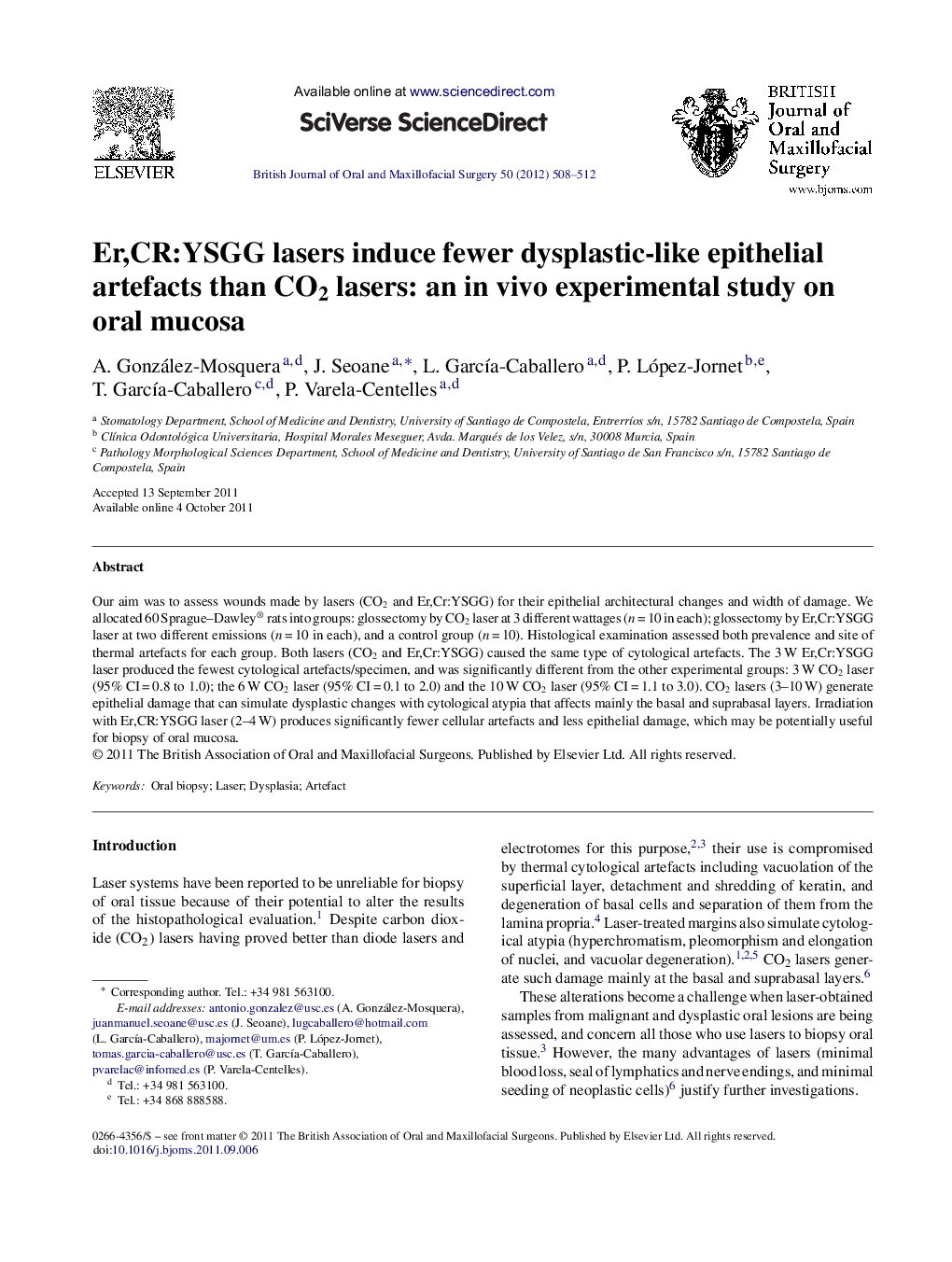| Article ID | Journal | Published Year | Pages | File Type |
|---|---|---|---|---|
| 3124009 | British Journal of Oral and Maxillofacial Surgery | 2012 | 5 Pages |
Our aim was to assess wounds made by lasers (CO2 and Er,Cr:YSGG) for their epithelial architectural changes and width of damage. We allocated 60 Sprague–Dawley® rats into groups: glossectomy by CO2 laser at 3 different wattages (n = 10 in each); glossectomy by Er,Cr:YSGG laser at two different emissions (n = 10 in each), and a control group (n = 10). Histological examination assessed both prevalence and site of thermal artefacts for each group. Both lasers (CO2 and Er,Cr:YSGG) caused the same type of cytological artefacts. The 3 W Er,Cr:YSGG laser produced the fewest cytological artefacts/specimen, and was significantly different from the other experimental groups: 3 W CO2 laser (95% CI = 0.8 to 1.0); the 6 W CO2 laser (95% CI = 0.1 to 2.0) and the 10 W CO2 laser (95% CI = 1.1 to 3.0). CO2 lasers (3–10 W) generate epithelial damage that can simulate dysplastic changes with cytological atypia that affects mainly the basal and suprabasal layers. Irradiation with Er,CR:YSGG laser (2–4 W) produces significantly fewer cellular artefacts and less epithelial damage, which may be potentially useful for biopsy of oral mucosa.
